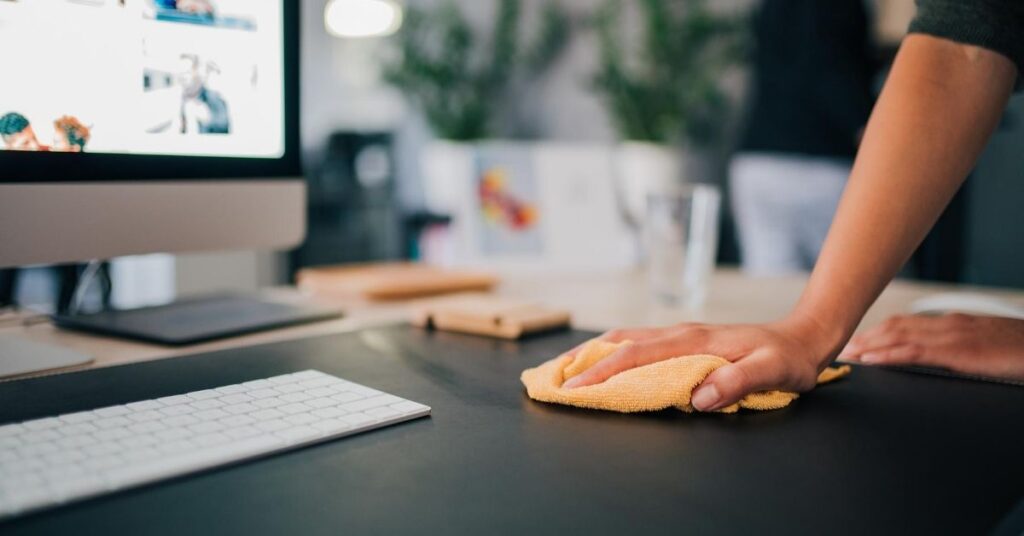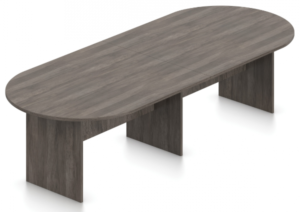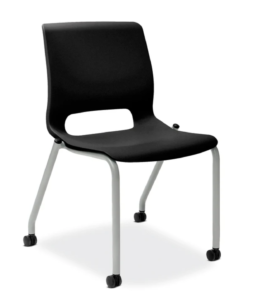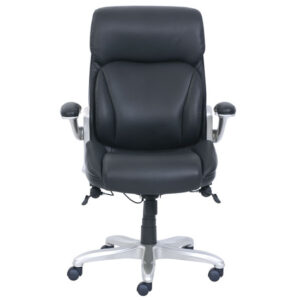The Complete Office Furniture Cleaning Guide
August 27, 2020
We don’t yet know how long the coronavirus can survive on surfaces.
The CDC reports that the virus may live for only a number of hours or as long as several days depending on the surface. Even if we’re looking at the best-case scenario – the virus spores die shortly after landing on your doorknob – that still leaves plenty of time for you to spread coronavirus while you work, either at home or at the office.
Think about how many times a day you touch your desk, chair, filing cabinet, bookshelves, or any other piece of furniture you use to get work done. Disinfecting the doorknob isn’t going to keep the virus at bay if those same pathogens are thriving on your office chair’s armrests. So, while the world is focused on facemasks and hand sanitizer (for good reason!), some serious attention needs to also be given to keeping office furniture clean and virus-free.
Different Pieces of Office Furniture Need Different Cleaning Regimens
With the coronavirus on the loose, every piece of furniture in your office needs a daily wipe down. But before you spray a single disinfectant, you need to know the right and wrong way to clean each type of furniture so you kill the virus without damaging your desk or chair.
The US Environmental Protection Agency issued a list of EPA-approved disinfectants to eliminate the most common and dangerous pathogens, including cleaning products that kill SARS-CoV-2 (COVID-19). There’s excellent information out there about how to kill the virus on surfaces, but there’s a lot to know. That’s why we’ve dug through it all for you. Below you’ll find a cleaning guide for how to attack viruses and bacteria on the most common types of office furniture surfaces.
Here’s How to Clean Your Office Furniture So You and Your Workplace Stay Healthy.
Resin and Laminate
Resin and laminate surfaces are easy to clean and hard to hurt, making them a great choice for office furniture you plan to clean several times a day. These surfaces can handle most of the cleaning products on the EPA’s list of approved disinfectants for use against viruses, letting you kill COVID on office surfaces without the fear of damaging your furniture.

Most resin and laminate desks and tables can also withstand a diluted bleach cleanser and those containing a concentration of 70% alcohol or higher. Just to be sure, check with your local furniture dealer before you apply a harsh disinfectant that could potentially damage your furniture.
How to Clean Resin Furniture:
Start by wiping the surface down with a gentle soap and warm water to remove any visible dirt. Then, use an EPA-approved coronavirus disinfectant to kill the virus on the surface. Different disinfectants have different contact times – the amount of time the cleaning product needs to lay on the surface to effectively kill the virus. Let the disinfectant sit on the surface for as long as is needed and then wipe it away with warm water if necessary. You’ll want to follow the manufacturer’s instructions closely to make sure you’re using the product the right way and fully killing the virus.
Plastic

Plastic office chairs and tables are great options when you’re looking to keep surfaces virus-free. Since plastic is non-porous, most can handle the products on the EPA’s disinfectants list. Avoid chlorine or bleach solutions, though. These can cause discoloration and even damage the plastic. With the right disinfectant, you can wipe down plastic office furniture several times a day to help reduce the chance of the coronavirus sticking around while you work.
How to Clean Plastic Furniture:
Clean plastic furniture with the same soap, water and disinfectant method as you did your resin office furniture. Use an EPA-approved cleaner for the type of plastic you’re cleaning and following the manufacturer’s directions.
Metal
Metal is another great choice for the post-COVID office. Its non-porous surface can handle most disinfectants on the EPA’s list, making it easy to clean. There are, of course, different metals that require slightly different cleaning methods, so check the manufacturer’s directions before you start spraying disinfectant on any metal desk or chair.
How to Clean Metal Furniture:
Wipe down the metal with warm water and a damp cloth to start. Then, apply an EPA-approved disinfectant that’s safe for the type of metal you’re cleaning.
Wood
Now let’s move on to some of the more sensitive furniture surfaces, starting with wood. Wood furniture requires special care. Unlike resin or plastic, you’ll quickly damage wood if you use a cleaning product that’s too harsh for the wood type or finish. A word of caution – most of the disinfectants on the EPA’s list are not safe for wood.
This doesn’t mean you need to get rid of your wood office furniture. A quality wood soap and polish can help keep wood clean. If you’re going to use wood furniture in your post-COVID office, however, we highly recommend choosing woods with an antimicrobial finish. A lot of manufacturers offer wood finishes that prevent microbes, including some viruses, from living on the surfaces of the wood in the first place.
How to Clean Wood Furniture:
Wipe down your wood furniture with a good wood soap or polish and warm water. Use a soft cloth to apply the polish and a separate one to wipe the chair dry once you’re done.
Leather

Leather may be tough, but it can also be a pretty high-maintenance covering. Quality leather can stain or become overly dry and brittle if it’s not treated with a conditioning cleanser. That means that when you need to remove viruses from a leather surface, traditional alcohol-based cleaners are off-limits.
If your office or lobby chairs are wrapped in leather, there are still ways to remove viruses from the surface without damaging them. Your best line of defense is a soap created specifically for leather. Soap and warm water will lift and remove viruses, as well as bacteria and allergens. So, while a quality leather soap won’t kill a virus, it’ll remove most of the virus from the surface and you’ll achieve the same result – a safe leather office chair.
How to Clean Leather Furniture:
With a mild leather soap and warm water, gently rub the leather surface in a circular motion. Use as little water to clean your chair as possible. We highly recommend following up with a leather conditioner once the surface is clean so the leather stays soft and doesn’t crack.
Upholstery
The right way to clean your upholstered office chairs and other furniture depends largely on the type of fabric used. Before you start, check for tags with washing instructions. Most upholstered office furniture includes directions for how to spot-clean and wipe the upholstery in a way that won’t damage the fabric.
While this type of general furniture cleaning is important, spot-cleaning and lightly wiping the fabric isn’t going to fully fend off a virus or other harmful bacteria. We recommend that the office furniture you choose include specialty fabrics designed with protective layers that repel or otherwise inhibit the growth and spread of pathogens. Most of these fabrics also protect against stains, mildew, moisture and more.
How to Clean Upholstered Furniture:
Follow the manufacturer’s directions or ask your furniture supplier for cleaning tips for your specific fabric type. In most cases, you can spot-clean cloth furniture using a mild upholstery soap and warm water. Then, use a lint-free cloth to wipe all of the upholstery down with the same soap and water solution, using as little water as possible.
Our furniture folks at Nolt’s are here to help you create the safest, most productive workspace possible with furniture that’s easy-to-clean and disinfect. We’re open for business and have new and used office furniture in stock, so come visit us today. We look forward to helping you create a healthy and productive post-COVID office.
